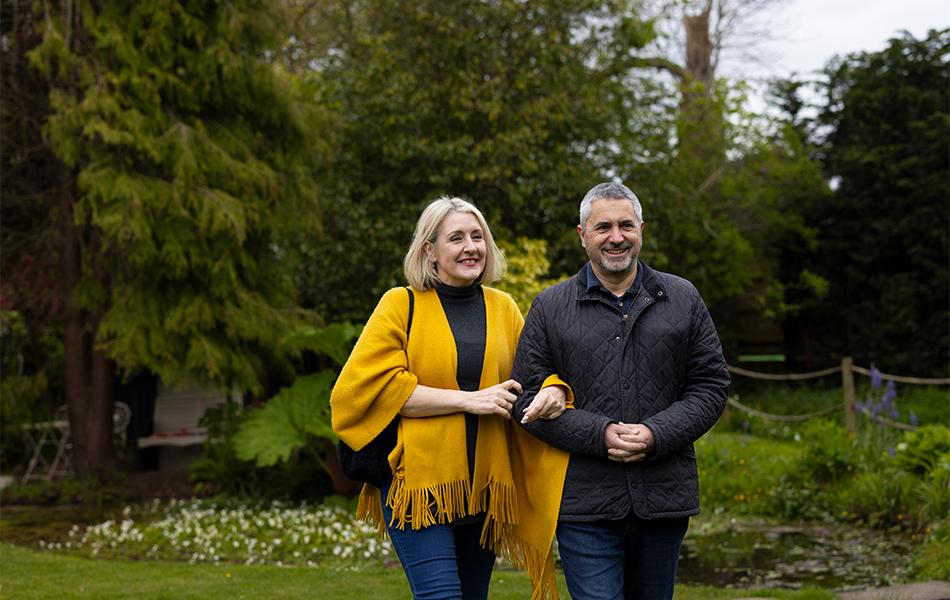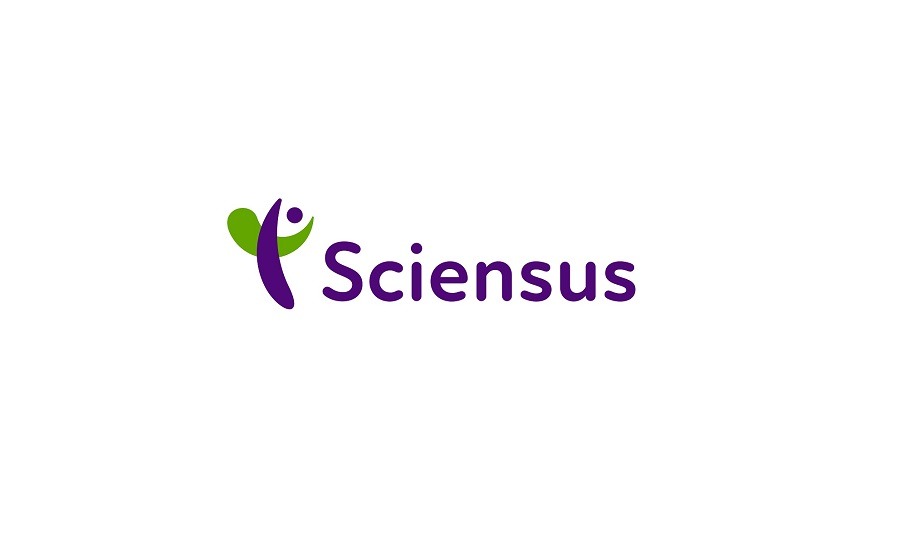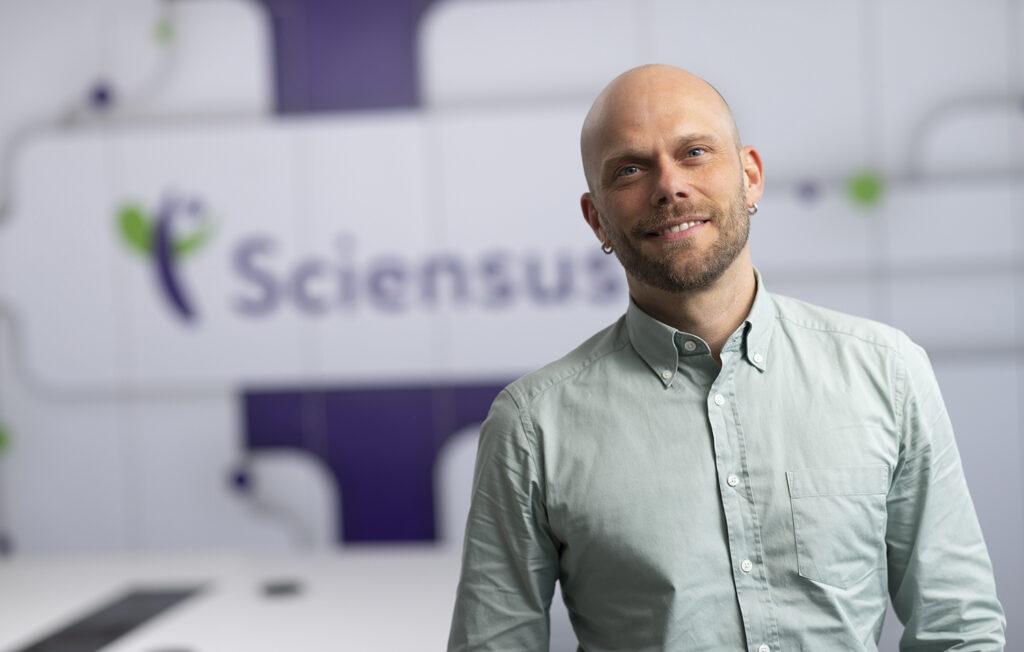
The developing role of gene therapy in finding solutions to rare diseases
Over the past few years, gene therapy has emerged as one of the most innovative and promising approaches to treating rare diseases.
Given that about 80% of rare diseases are of genetic origin, gene therapy offers an exciting opportunity to address these conditions directly at their genetic roots.
Yet, this potentially comes with its own set of unique challenges that must be carefully navigated.
As someone who works at the intersection of clinical services and rare diseases, Mathieu Loiseau, Director of Rare Clinical Services at Sciensus, has seen firsthand how the evolving landscape of gene therapy could transform our ability to find effective solutions for patients, who have long been underserved.
Sciensus is a life sciences business, specializing in patient access, engagement and insight solutions. In this article, Loiseau delves into the current state of gene therapy. He examines both its potential to revolutionize rare disease treatment and the significant obstacles that still lie ahead.
Beyond that, this article explores the complexities involved in developing these therapies, from understanding long-term effects and managing patient expectations to the logistical challenges of delivering such advanced treatments.
As we stand on the brink of a new era in medicine, it is crucial to balance the excitement of scientific breakthroughs with a considered approach to their implementation.

Europe presents a complex regulatory environment, with each country having its own guidelines and legislation regarding access to unlicensed medicines. While the European Medicines Agency (EMA) provides overarching guidance, individual member states have the autonomy to develop their regulations.
Currently, 18 of 27 EU countries have established national guidance around Compassionate Use Programs (CUPs). This patchwork of regulations requires biotech firms to be highly strategic in their approach to launching EAPs in Europe.
“Navigating the regulatory landscape in Europe is one of the most significant challenges biotech firms face when considering an expanded access program,” says Cummins.
“It’s not just about meeting regulatory requirements; it’s about understanding the nuances of each market and tailoring your approach accordingly. This is where the expertise of specialized service providers like Sciensus Rare becomes invaluable.”
Understanding gene therapy and its promise
Gene therapy, at its core, involves the modification of a patient’s genetic material to correct or replace faulty genes responsible for disease development. This can be done through several methods, including inserting a healthy copy of a gene, replacing a defective gene, or even deactivating a malfunctioning gene.
For decades, researchers have aimed to harness the potential of gene therapy to provide cures for a wide range of genetic disorders. With advancements in genomics and precision medicine, we are now closer than ever to realizing these goals.
The field of gene therapy has made remarkable advances in recent years, with innovations such as gene editing and gene augmentation, offering new hope for patients with rare diseases. Technologies like CRISPR have revolutionized our ability to precisely alter genetic material, while the development of viral and non-viral vectors has improved the delivery of these therapies to target cells. For instance, the NHS is now rolling out life-saving gene therapies for babies with rare genetic conditions, showing the real-world impact of these breakthroughs on patient care.
However, as we venture into this promising territory, it is crucial to acknowledge that gene therapy is still in its infancy. We are just beginning to understand the long-term implications of altering genetic material, which presents both opportunities and challenges.

The challenges gene therapy poses for the Rare Clinical Services sector and Expanded Access Programs
One of the most significant challenges in the rare clinical services sector is the lack of comprehensive data and understanding of rare diseases. Unlike more common diseases, rare diseases often have little known about their natural history, progression, and response to treatment. This paucity of data makes it difficult to develop and implement effective clinical interventions.
In the context of Expanded Access Programs (EAPs), which provide patients with access to investigational therapies before they are commercially available, this lack of data presents an additional layer of complexity. Without robust data to guide decision-making, it becomes challenging to identify which patients are most likely to benefit from gene therapies and to monitor their outcomes effectively.
Gene therapy is novel not just because of its technological sophistication, but also due to its ability to address the genetic causes of diseases directly.
The process of modifying genes is inherently complex, involving either ex vivo (outside the body) or in vivo (inside the body) interventions. Both methods present their own sets of challenges, from the technical difficulties of delivering the therapy, to ensuring that it reaches the right cells and integrates correctly into the patient’s genome.
Gene therapy often requires a complex treatment pathway that may span months or even years before the actual therapeutic intervention is administered. This is particularly challenging for patients who may already be dealing with significant health burdens. This extended timeline required for gene therapy preparation and administration can complicate the management of patient expectations and the logistics of providing timely access to treatment.
Moreover, as we start offering gene therapies, especially to children who might not have lived long without such interventions, we may encounter new health challenges and unmet needs.
The long-term effects of these treatments are still unknown. In the realm of EAPs, this uncertainty necessitates rigorous patient monitoring and follow-up, both to ensure patient safety and to gather valuable data that can inform future treatment strategies and regulatory decisions.
For EAPs specifically, the integration of gene therapies also requires careful consideration of ethical and regulatory issues. This includes ensuring informed consent and balancing the need for rapid access with the requirement for comprehensive patient education and support. These challenges underscore the importance of developing robust frameworks that can adapt to the evolving landscape of gene therapy. This ensures that patients receive the best possible care while new treatments are brought to market responsibly.

Balancing the pros and cons of gene therapy in Expanded Access Programs
After all, the potential benefits of gene therapy are great in patients with rare diseases where treatment options are often very limited. In fact, for many, gene therapy might represent the first effective option for disease management or even a potential cure. Gene therapy can provide a level of precision unattainable by traditional therapies because it targets the genetic cause of the disease.
These benefits must be weighed against the potential risks and uncertainties associated with gene therapy. This is especially the case given our current position, with limited data from long-term experiments failing to guarantee an understanding of either side effects or durability.
However, the added challenge for EAPs is that these programs are built on emerging therapies without having gone through the full spectrum of clinical testing. Careful monitoring with a strongly observed framework for gathering real-world data will be required to ensure the safety and efficacy of treatment over time.
Patient support programs further facilitate available healthcare resources with guidance for the patients on how to manage the treatment pathways and any associated side effects. This enables patients to more closely adhere to sometimes very complex therapy schedules. This extra layer of support decreases the possibility of delays or discontinuations that may affect timely treatments and lower the risk for pharma companies of incurring added costs, such as loss of valuable manufacturing slots.
There is also the challenge of delivering these therapies effectively, given the complex pathways and infrastructure required. Gene therapies often involve intricate preparation and administration processes that can span several months, requiring coordination among various healthcare providers and facilities. In the context of EAPs, this complexity can create logistical hurdles, particularly when trying to provide timely access to treatments for patients who are in urgent need.
Moreover, gene therapy is expensive, with costs ranging from hundreds of thousands to millions of dollars per treatment, and its high cost can be a barrier to access for many patients.
As we work to bring these new, cutting-edge therapies to market, it is essential to consider the economic implications. The aim is to develop cost-effective solutions that are accessible to all who need them. Balancing the promise of gene therapy with its practical challenges requires a comprehensive approach that considers both clinical efficacy and economic sustainability. This ensures the benefits of these groundbreaking treatments can reach as many patients as possible.
Conclusion
Gene therapy will continue to disrupt the field of rare diseases with a new paradigm for treatment: one targeted at the root cause of many genetic conditions. It is a unique opportunity in many diseases, where there has been little hope of effective treatment to change their courses. Hopefully this will transform the lives of patients who have long faced limited options and uncertain prognoses. This is a new approach that instills fresh hope in patients and their families, offering a glimpse of a road leading to much more effective and personalized therapies.
In the wake of such transformation, it’s important to be aware of our caution for blind optimism. If gene therapy is forging ahead with rapid strides, scientific investigation into its long-term effects needs to keep pace. Of course, the rare disease community does and has confronted myriad challenges due to a lack of data, which extends into gene therapy, where much is yet to be learned on the long-term safety and efficacy of these treatments. This will, in the long term, ensure that the translation of scientific breakthroughs into real-world benefits for patients involves therapies that are safe, effective, and available.
In the future, gene therapy will play an exponentially increasing role in the industry of rare diseases. We can look forward to a time when gene therapy will become a mainstay in the treatment options for a wide range of genetic rare disorders. This progress will foster greater collaboration among industry stakeholders, biotech firms, researchers, health providers, and patient advocacy groups to address ongoing challenges and enhance access to these transformative treatments.
However, successful gene therapy will require so much more than scientific and clinical advancements. Robust patient support programs will be paramount as the patient navigates complex treatment pathways, manages possible side effects, and learns to adjust to new realities post-therapy. The programs should make available comprehensive care, from psychological support down to patient education, in order to make sure people and their families are well-equipped for the journey ahead.

About Sciensus
Sciensus is a leading European life sciences organisation with over 30 years of experience. We’re redefining patient-centric care, connecting patients with life-changing medicines while empowering pharmaceutical companies and healthcare professionals with the insights needed to improve people’s lives.



